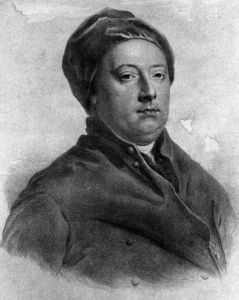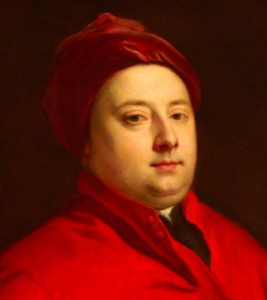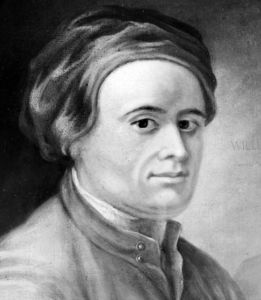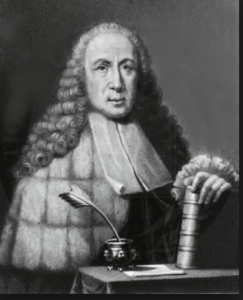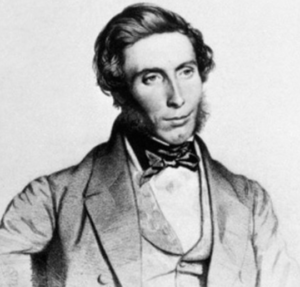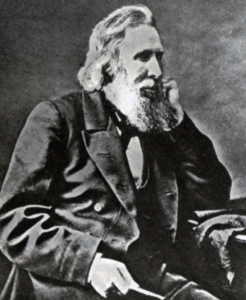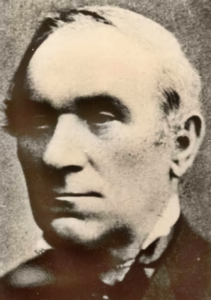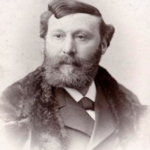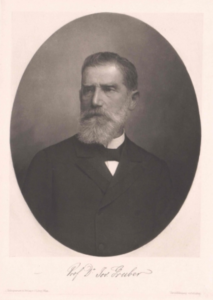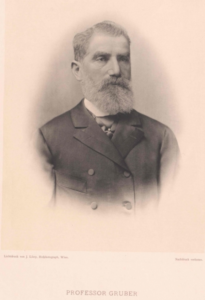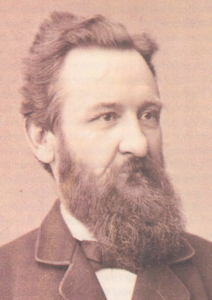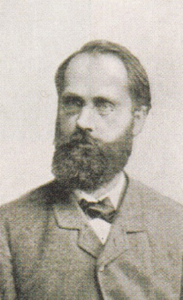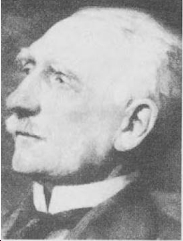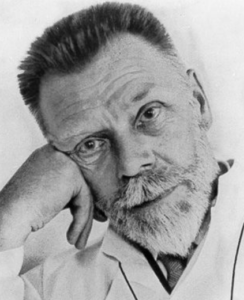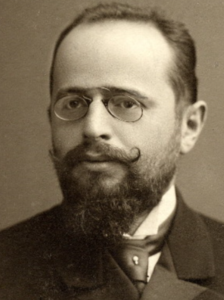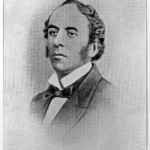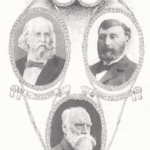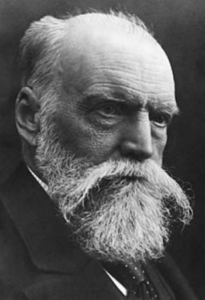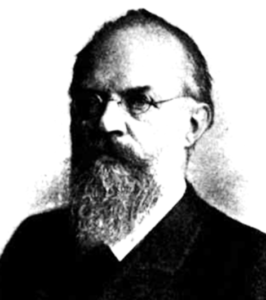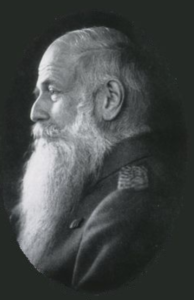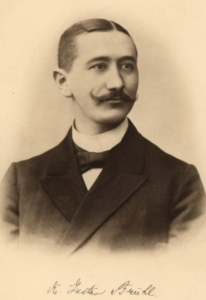Famous Otologists
Giovanni Filippo Ingrassia (1510-1580)
Giovanni Filippo Ingrassia was an Italian physician and anatomist who by accident discovered the stapes in the middle ear during one of his cadaver studies of the temporal bone.
William Cheselden (1688-1752)
William Cheselden was born in Somerby at Burrough on the Hill, Leicestershire. He was an English surgeon and anatomist who has a large share in the establishment of surgery as a medical science. He studied at 1703 Anatomy in London under William Cowper (1666-1709) and held lectures in anatomy from 1710. In 1713 he published his work Anatomy of the Human Body which was widely popular and in 13 editions appeared. In this book he described the middle ear anatomy with the stapedius muscle and a fourth middle ear bone.
Giovanni Battista Morgagni (1682-1771)
Giovanni Battista Morgagni (1682-1771) was an Italian anatomist and pathologist born in Padua Italy whose works helped make pathological anatomy an exact science. His principal university teacher was Antonio Maria Valsalva in Bologna. Morgagni assisted Valsalva in his great work, De aure humana tractatus which was published in 1704.
Jean-Marc-Gaspard Itard (1774-1838)
Jean Itard was born in Oraison, France He was a French physician noted for his work with the deaf. He was a military surgeon initially attached to Napoleon’s famous surgeon Baron Larrey. After meeting the Abbé Sicard, the director of the National Institute for Deaf-Mutes in Paris, Itard received an appointment as the institute’s residential physician to study the functions and malfunctions of hearing. Itard wrote Traité des maladies de l’oreille et de l’audition (1821) describing the results of his medical research based on over 170 detailed cases. He experimentally tested the function of the inner ear in animals and showed that the removal of the stapes did not lead directly to deafness.
Wilhelm Kramer (1801–1876)
Wilhelm Kramer was a German otologist born in Halberstadt. He studied medicine at the universities of Göttingen and Berlin. He furthered his education in Vienna and Paris, then returned to Berlin. He was oneof the first physicians to devote his attention exclusively to otology. He is credited as being the first to use tuba catheterization to treat middle ear disease.
Sir William Robert Wills Wilde (1815-1876)
William Wilde was born at Kilkeevin in the County Roscommon in Ireland. He studied medicine in Dublin. Trained in several centers in Europe he became a specialist in eye and ear diseases. He settled down in Dublin in the St.Mark’s hospital in1841. He was the first to teach otology in Great Britain. Wilde was author of significant works on medicine, archaeology and folklore, particularly concerning his native Ireland. He was the father of Oscar Wilde.
James Hinton (1822-1875)
James Hinton was born in Reading UK. He was an English surgeon and author. He studied medicine at St. Bartholomew’s Hospital and received his diploma in 1847. He spent a few years in the caribbean and then returned to London in 1850. He became good friends with Joseph Toynbee and classified his temporal bone collection. After being appointed aural surgeon to Guy’s Hospital in 1863, he soon acquired a reputation as the most skillful aural surgeon of his days.
Friedrich Eduard Rudolf Voltolini (1819-1889)
Voltolini was born in Elsterwerda Prussia. He studied since 1838 in Breslau and Berlin. He went in 1860 to Breslau, where he habilitated in 1862 as a lecturer in otolaryngology. He became associate professor in otology in 1868. Voltolini created together with Gruber, Weber-Liel and Rüdinger the journal Monatsschrift der Ohrenheikunde. Voltolini has made a special contribution to the application of galvanic caustic to laryngeal and nasal diseases.
Adam Politzer (1835-1920)
Adam Politzer was born in 1835 in Albertirsa, Pest, Hungary. He studied medicine in the University of Vienna. Adam Politzer became a professor of otology at the University of Vienna in 1861.Together with Joseph Gruber (1827–1900) he opened a private otological clinic in 1863. Politzer invented many medical devices for the diagnosis and treatment of ear diseases. In 1878 Politzer published the Lehrbuch der Ohrenheilkunde an outstanding and authoritative textbooks on otology of the 19th century. Politzer was the first to describe otosclerosis as a separate clinical entity.
Josef Gruber (1827-1900)
Josef Gruber was born in 1827 in Kosolub in Austria. He studied medicine in Vienna and specialized in otology. Together with Adam Politzer he founded in 1873 one of the first ear clinic in Europe. Gruber was also decisively involved in the founding of the” Monatsschrift für Ohrenheilkunde “in 1875. Gruber wrote two book on the treatment of ear diseases and developed instruments for middle ear surgery.
Camille Miot (1838-1904)
Camille Miot was born in Moulins- Engilbert in France. He is most identified with the operation of mobilisation of the stapes, which he practised and advocated with the strongest convictions as to its value. In 1896 he presented his results claiming a success in 18 of 24 otosclerosis cases. With the collaboration of his pupil, Dr. Baratoux, he published a portion of what was intended to be a complete treatise on diseases of the ear. In 1952 Samuel Rosen presented the stapes mobilisation for otosclerosis as a new treatment without mentioning the work of Miot
Vincenze Cozzolino (1853-1911)
Vincenze Cozzolino was born in Naples in 1853 by Domenico and Carmela Borrelli. When he was an orphan of a father at the age of ten, he spent his youth in extremely disadvantaged economic conditions, but was able to complete his studies in Naples and graduate in pharmacy in 1873 and in medicine in 1874.In 1876 he won a doctor-surgeon competition for the Royal Navy and in the same period he began his scientific production with a prevalent otorinolaringological orientation. In 1882 the Minister of Public Education conferred him the task of traveling to Paris, London and Vienna to study the organization of otorhinolaryngology clinics. In the Vienna the Cozzolino specialized in otology with Adam Politzer. In 1891 Cozzolino began with otological surgery that until then had been performed by Emilio di Rossi in Rome only. At the otology conference in Rome 1894 Cozzolino showed himself to be an opponent of middle ear surgery for otosclerosis.
Johannes Kessel (1839-1907)
Kessel was born in 1839 in Selzen, Hessen Germany. He studied Medicine in Giessen and Wurzburg. He was a pupil of Anton v. Tröltsch in Würzburg. He had worked in Vienna (with Politzer), Prague (Mach) and Graz. After working in Graz Kessel then obtained his appointment to Jena. Kessel’s work was clinically and experimentally on the function of the middle ear. In 1876 still in Graz, he was the first in otosclerosis surgery on a fixed stapes. After his death he was succeeded in 1907 by Karl Wittmaack.
Charles Delstanche (1840-1900)
Destanche was born in Bruxelles Belgium. He studied medicine in Boulogne from 1857 to 1863. In 1864, he spent four months in London visiting Toynbee and some hospitals. He settled permanently in Brussels in 1865. He Invented a device for massaging the tympanic membrane. In 1877 Delstanche founded the first Belgium clinic for nose and ear diseases. He got several prizes for his contribution to otorhinolaryngology.
Albert Burckhard-Merian (1843-1886)
Burckhard-Merian was born in Basle Switzerland. He studied medicine in basle, Heidelberg,Wurzburg and Berlin. He became lecturer in otology in 1869 and associated professor in 1879 in Basle.
Ambroise Arnold Guillaume Guye (1839-1905)
Guye was born in Maastricht the Netherlands. He studied medicine at Amsterdam, where he graduated in I862. After a further course of study at Vienna, Berlin, and Paris, he began to practise in Amsterdam as a specialist in diseases of the ear. He qualified as Privat-docent in I874, and in 1886 he was appointed Extraordinary Professor at the University of Amasterdam. He founded in 1893 the Netherlands Throat, Nose and Ear Society.
Karl Adolf Passow (1859-1926)
Passow was born in 1859 in Magdeburg. He was a German physician, otologist, Head of the Ear Clinic of the Charité Hospital in Berlin. He studied medicine in Berlin and became resident trained by Bernhard Fränkel and at the ear clinic under Moritz Ferdinand Trautmann . Passow received in 1896 a call to the Ruprecht-Karls-University Heidelberg on the Extraordinariat of Otolaryngology.In 1902, Karl Adolf Passow was appointed to succeed Trautmann as full professor in Charité Hospital in Berlin. Passow the first professor of otology in the German Reich. Passow was the known of being the first to create a fenestra in the promontory and covered it with the tympanic membrane to treat otosclerosis. Passow was also the treating ear specialist of the German emperor Wilhelm II.
Karl Wittmaack (1876-1972)
Karl Wittmaack was born in Berlin 1876. He was a German ear, nose and throat doctor and professor of medicine in Greifswald, Jena and Hamburg. He studied atthe university hospitals in Kiel, Wroclaw and Heidelberg. After the death of Johannes Kessel as professor of otology at the Friedrich Schiller University Jena Karl Wittmaack succeeded him in 1908. He contributed a lot of pioneer work to experimental pathology of the ear. He left a unique collection of serial sections of temporal bones from animals and man. Wittmaack designed a special neurosurgical procedure for the treatment of otosclerosis (Duraluftung an tegmen tympani) which was not successful.
Friedrich Siebenmann (1852-1928)
Siebenmann was born in 1852 in Aarau Switzerland .From 1871 he studied at the universities of Zürich, Würzburg and Bern.He furthered his education in otology and laryngology in Vienna, Breslau and Munich and in 1888 obtained his habilitation. In 1892 he became an associate professor for otolaryngology at the University of Basel. He is best remembered for anatomical research of the inner ear vascularization and for studies involving the pathology of deafness. Together with Politzer and Botey he condemned any type of surgery for otosclerosis at the end of the 19th century.
Ricardo Ducoing Botey (1855-1921)
Botey was born in Barcelona in 1855, and died in the same city in 1921. He studied medicine in Barcelona. During his first years of professional practice he devoted himself to histology and bacteriology, and took an active part in the campaign against cholera during the years 1885 and 1886. Since 1890 he was definitively established as an otolaryngologist and founded the International Archives of Laryngology, Otology and Rhinology, a journal with different names and variable periodicity. it was published until 1926. In 1900 he declared that any ear surgery for otosclerosis was dangerous and useless supporting the meaning of Politzer and Siebenmann.
Rudolf Panse (1863-1942)
Rudolf Panse was born on 18 July 1863 in Erfurt Germany. At the end of his university studies, he soon became Professor of Otolaryngology under Prof. Schwartze in Halle. He furthered his education in otology and laryngology by visiting in 1892 the well-known otology clinics in London, Paris, Graz, and Vienna. In 1893 he settled down in Dresden as a practicing ear where he developed an immensely practical and scientific activity. He was the first one to suggest a prosthesis after an extraction of the stapes in otosclerosis.
Victor Hammerschlag (1870-1943)
Viktor Hammerschlag was born in Leipnik / Czech Republic.He studied at the Medical Faculty of the University of Vienna and in 1895 became a doctor. He then began working as an ENT doctor at the Vienna Wilhelminenspital, where he worked until his retirement in 1936.In 1938 he became a lecturer in otology at the Medical Faculty of the University of Vienna. Victor Hammerschlag published in 1905 in the ” Wiener klinischen. rundschau,” as one of the first two family trees with hereditary otosclerosis. A dominant heredity was supposed. Viktor Hammerschlag was persecuted for racist reasons in National Socialism, his Venia legendi was revoked in 1938, on 22 April 1938 he was removed from office and expelled from the University of Vienna. Together with his wife he was deported to Theresienstadt in 1942, where both died in 1943.
Gustav Alexander (1873-1932)
Alexander was an Austrian otolaryngologist remembered for describing Alexander’s law. He studied medicine in Vienna and was an assistant of the anatomist Emil Zuckerkandl. He worked with Adam Politzer in the university of Vienna and was the successor of Viktor Urbantschitsch. From 1907-1932 he led the ears department of Vienna General outpatient clinic. Until his death.He was assassinated on the street between his home and the Poliklinik by Johann Sokoup, a Czechoslovakian former patient who had tried to assassinate him 22 years earlier.
Antonio Maria Valsalva (1666-1723)
Antonio Maria Valsalva was an Italian medical doctor, a surgeon and a professor of Anatomy who was born in Imola Italy. He was one of the very important scientists in the seventeenth century in Europe. He was the one who recognized the nature of otosclerosis published De aure humana tractatus in 1704.
Guichard Joseph Duverney (1648-1730)
Guichard Joseph Duverney was born in Feurs, France. He studied medicine in Avignon, where in 1667 he obtained his medical degree. Shortly thereafter, he relocated to Paris. Duverney is considered to be the founder of scientific otology and, to many, the father of the discipline. During this time, he wrote what is thought to be the earliest and most comprehensive work in otology : Traité de l’organe de l’ouie, contenant la structure, les usages et les maladies de toutes les parties de l’oreille which was published in Paris in 1683. In the book he discusses the anatomy, physiology and diseases associated with the ear. Duverney is remembered as the first French Otologist and among the first otologists in Europe.
John Cunningham Saunders (1773-1810)
John Cunningham Saunders was born in Devonshire in 1773 and at the age of seventeen was apprenticed to a surgeon named John Hill in the town of Barnstaple, Devon. He served his apprenticeship for five years before moving to London where he studied at St. Thomas’ Hospital and Guy’s Medical School under Astley Cooper. He was subsequently appointed demonstrator of anatomy at St. Thomas’ Hospital, succeeding Astley Cooper in that post. Saunders treated eye and ear diseases but later on he only treated patients affected with diseases of the eye in the premier ophthalmic hospital in England. His most significant ear publication was The Anatomy of the Human Ear (1804).
Henry Jones Shrapnell (1792–1834)
Shrapnell was an English anatomist and who described the correct form and structure of the tympanic membrane published in The London Gazette in 1830.He divided the drum membrane into two parts, the pars tensa and the pars flaccida. This latter structure is still known as Shrapnell’s membrane. In 1833, he published a paper on the anatomy of the incus.
Astley Paston Cooper (1768-1841)
John Harrison Curtis was a self-made English otologist, inventor, writer and lecturer who served as aurist to the Prince Regent. He invented several new instruments for operations on the ear. His ideas and practice were a mixture of charlatan and of applied common sense. He designed the acoustical chair. In 1816 he founded the first specialist ear hospital in Britain on nearby Carlisle Street London town. His first work, A Treatise on the Physiology and Diseases of the Ear, first published in 1817, reached six editions in his lifetime and was translated into French and German.
Jean-Pierre Bonnafont (1805-1891)
Bonnafont was born in Plaisance France. He was a French doctor, specialist in the measurement of auditory acuity as well as the differentiation of deafness He was innovative in the field of otology. In 1834 he designed the first otoscope to examine the ear. He published numerous books and memoirs, which include otology.
James Yearsley (1805–1869)
James Yearsley was an otologist born in 1805 in Cheltenham. He studied medicine in London and became a member of the Royal College of Surgeons of England in 1827. Yearsley started to practise as an aural surgeon in London about 1837. He claimed to invent an artificial tympanum in the relief of deafness, and he had some disagreement about that with John Toynbee.
Joseph Toynbee (1815 –1866)
Joseph Toynbee was a otologist born in Hackington England. He collected over 2000 temporal bones and regularly published results of his research. He demonstrated stapes ankylosis in 136 in 1,149 dissected middle ear ears. He distinguished four types of pathological variations of stapes footplate fixations. The quality of the temporal bone collection attracted Politzer , von Tröltsch and Lucae to visit Toynbee. The work of Toynbee can be considered the birth of otology as a medical specialism.
Anton Friedrich Freiherr von Tröltsch (1829-1890)
Anton von Tröltsch was born 1829 in Schwabach Germany. He studied Law before turning to medicine in Würzburg. He studied Otology and Ophthalmology in Prague and in 1855 he visited the otologists John Toynbee in London and William Wilde in Dublin. Since 1856 von Tröltsch only applied to otology. In 1864 created with Adam Politzer and Herman Schwartze the first journal in otology, Achives für Ohrenheilkunde. Tröltsch’s teaching and publishing activities have had a major impact on the further development of otology, in particular his textbook of ear diseases. Among his better known students was Friedrich Bezold.
Giuseppe Gradenigo (1859-1926)
Gradenigo was born in Venice, October 29, 1859. He studied medicine at the University of Padua. Worked in Vienna with Politzer. He practised Otolaryngology in Turin and became in 1917 professor in Naples. He founded in 1893 with Emilio di Rossi the “Archivio italiano di Otologia, Rhinology e Laryngologia” and 1903 with L. Brieger from Breslau the “Centralblatt für Ohrenheilkunde” He is well-known of the Gradenigo syndrome consisting of diplopia and facial pain due to a middle ear infection.
Hermann Schwartze (1837-1910)
Hermann Schwartze was born in Neuhof in Germany 1837. He studied medicine in Wurzburg where he met Anton von Tröltsch. Through him, Schwartze was made enthusiastic for the Otology. During his military service he met August Lucae who later became a well-known otologist and a lifetime friend. In 1863 Schwartze established himself as an otologist in Halle. He is one of the pioneers of ear surgery who developed new techniques of like the antrotomy and mastoidectomy as well as radical surgery for chronic ear diseases and cholesteatoma.
Bernhard Fränkel (1836-1911)
Friedrich Bezold was a German otologist and professor at the University of Munich. He made several contributions to early audiology. He was well-known for his triad on otosclerosis consisted of failing or diminished perception of the deeper tones, retarded bone conduction and a negative Rinne’s test. in his book (1895) on statistical findings in otology, Bezold pointed out the heredity of otosclerosis
Abraham Kuhn (1838-1900)
Kuhn was an otolarynologist born in Bissersheim, Germany. He studied at the University of Würzburg and a was an assistant under von Tröltsch. He continued his education at the École de Médecine in Strasbourg. In 1881 Kuhn was appointed associate professor of otolaryngology and director at the clinic of ear diseases of the Kaiser- Wilhelm-Universität in Strassburg. After his death he was succeeded by Paul Manasse.
Emilio di Rossi (1844-1901)
Di Rossi was born in Menton France. He became 0ne of the first otologists in Italy. He studied medicine in Genua and got a medal of Township of Genua for being the best student. He continued his studies in Paris and wrote a paper on ear disease which Herman Schwartze considered the best published at that time. In 1871 di Rossi moved to Rome. He founded the first otology clinic and performed ear surgery on a high level. He invented many surgical instruments and in 1891 he became professor in otology. In 1893 Emilio di Rossi founded together with prof. G. Grandenigo di Torino the Italian journal: Archivio italiano di otologia, rinologia e laringologia. Di Rossi was the first who performed the tenotomy and the stapedectomy in Italy.
Johann Constantin August Lucae (1835-1911)
August Lucae was a German otologist who was born Berlin. He studied medicine at the University of Berlin in Berlin and at the University of Bonn. In 1859 His other paths then took him to Würzburg to Anton Friedrich von Tröltsch, Prague, Vienna, Paris and London. In London he worked with Joseph Toynbee (1962). Lucae developed several instruments used in otology, including the “Lucae pressure probe”, a device which uses vibratory massage for treatment of the middle ear in cases of progressive conductive deafness like otosclerosis.
Ferdinand Trautmann (1833-1902)
Ferdinand Trautmann was born in Wittenberg Germany. He studied medicine in Berlin and he was appointed Dr. Ing. med. PhD in 1857. He then trained in otology with Hermann Schwartze in Halle and Hermann Friedrich Wendt in Leipzig. In 1873 he practiced as an ear specialist first in Breslau and later in Berlin. He was famous for his radical ear operations. He published : Chirurgische Anatomie des Schläfenbeins insbesondere für Radicaloperation, 1898.
Salomon Moos (1831-1895)
Moos was a German otologist born in Randegg Baden Germany. He studied medicine at the University of Heidelberg. He continued his education in Prague and Vienna, and in 1859 became private docent at Heidelberg. In 1866 he was an associate professor, later being appointed director and chief surgeon of the otology clinic at the University of Heidelberg. His research involved diseases of the inner ear. In 1867 he described as one of the first two case of bilateral otosclerosis. Moos is credited with being the first physician to point out that in certain infectious diseases within the inner ear could affect hearing and equilibrium.
Arthur Wilhelm Hartmann (1849-1931)
Hartmann was born in Heidenheim Germany. He studied in Tubingen, Freiburg and Leipzig. He was doctor and university teacher. Hartmann studied laryngology and otology in Vienna and became friends with Adam Politzer. He went thereafter to Berlin and became well-known otologist who treated the children of the German king. In 1901 Hartmann founded the Berlin Otology Society.
Carl Otto von Eicken (1873-1960)
Von Eicken was born in Mülheim an der Ruhr Germany. He was physician and otologist. He studied medicine at the universities of Kiel, Geneva, Munich, Berlin and Heidelberg. In 1901, Eicken became assistant to Gustav Killian. In the following years he dealt with otology. In 1910 he became associate professor at the University of Giessen. In 1921 von Eicken succeeded Killian in Berlin and five years later became director of the united first and second H.N.O. Clinic of the Charité Hospital. In May 1935 and November 1944, he removed a polyp from the left vocal cord of Adolf Hitler. He published in 1940 Die Atlas der Hals-, Nasen-, Ohren-Krankheiten
Otto Maximilian Ferdinand Körner (1858-1935)
Otto Körner was a German physician specializing in ear, nose and throat medicine. Körner studied in Marburg, Freiburg and Strasbourg medicine. In 1882 he received his doctorate in law. med.In 1899 he founded the first ENT specialist clinic at a German university. The Rostock “University Clinic for Ear, Nose and Throat Diseases” was also the first clinic of its kind in Central and Northern Europe.
Victor Urbantschitsch (1847–1921)
Victor Urbantschitsch was born in Vienna 1847 and he studied at the University of Vienna, receiving his medical doctorate in 1870 and his surgical degree in 1871. In 1873 he obtained his habilitation for otology and several years later was named head of the otology department at the general polyclinic in Vienna. In 1885 he became an associate professor and in 1907 succeeded Adam Politzer as head of the university ear hospital. Urbantschitsch is considered one of the founders of modern otology.
Émile-Jules Moure (1855-1941)
Emile Moure was born in Bordeaux in 1855. He studied medicine in Paris returned to Bordeaux in 1880 where he created the first ENT clinic in France. Moure founded in 1882 the French Society of Otology and laryngology. Moure was one of the pioneers in otology who condemned stapes surgery in 1894 for being dangerous and un successful. His successor became in 1926 Georges Portmann (1890-1985) who had married his daughter in 1918.
Alfred Friedrich Amandus Denker(1863-1941)
Arthur Henry Cheatle (1866-1929)
Werner Kümmel was born in Hildesheim Germany. He studied medicine from 1883 in Leipzig, Marburg and Strasbourg. In Strasbourg in 1888 he received his doctorate. In 1895 he was habilitated in Wroclaw. In 1896 he took over the Breslau Outdoor clinic for ear patients. In 1899 he received an associate professorship. In 1902 he followed a call to an associate professor in Heidelberg, where he became full professor in 1919.
Gustav Ernst Brühl (1871-1939)
Gustav Brühl was born in Berlin. He received his education in Vienna and Freiburg under A. Politzer and Bloch, and at the Anatomical Institute of Zuckerkandl in Vienna. Since 1898 he worked as an ear doctor in Berlin. he taught classes at the University of Berlin, where in 1922 he became an associate professor. He performed histological studies on the organ of Corti and worked on otosclerosis. Brühl’s best known written work was the highly regarded Atlas und Grundriss der Ohrenheilkunde, of which he was co-author along with Adam Politzer. In 1902 this book was translated into English by American otologist Seth MacCuen Smith as Atlas and Epitome of Otology
Jacob Hermann Knapp (1832-1911)
Hermann Knapp was a German-American ophthalmologist and otolaryngologist. He was born in Dauborn, Nassau. He earned his medical degree from the University of Giessen in 1854. From 1860 until 1868 he was a professor of ophthalmology at Heidelberg. He emigrated to New York City, where he worked as a surgeon.
USA
Samuel Sexton (1833-1896)
Sexton was born at Ohio in 1833 and took his medical degree in the University of Louisville in 1856. After a few years of general practice he settled in New York, and devoted himself to the treatment of diseases of the ear. To Sexton aural surgery owes several important developments. notably the improvement of the operation of extirpation of the ossicles for the cure of chronic deafness. He was the author of a classic treatise on Rare Forme of Ear Diseases, and contributed largely to otological literature.
Daniel Bennett St. John Roosa (1838-1908)
St. John Roosa born in Bethel, New York. He studied medicine at the New York’s University Medical College. He became resident surgeon at the New York Hospital in 1862, and in 1864 began practice in New York City. He wasone of the founders of Manhattan Eye, Ear and Throat Hospital. From 1863 to 1882 he was professor of diseases of the eye and ear in that hospital and from 1875 to 1880 held a similar chair in the University of Vermont (Burlington). In 1873 St. John Roosa published his first version of the book “A practical Treatise on the Diseases of the Ear”
Clarence John Blake (1843-1919)
Clarence Blake was born in Boston 1843. He studied medicine in Boston Harvard and visited Politzer in Vienna in 1868. Professor of Otology, Harvard University He was editor of American Journal of Otology, 1879-82. He was author of otological text book “Operative Otology” and scientific papers in acoustics and telephony, and upon structure function and diseases of the ear. Alexander Graham Bell offered Blake a valuable post ,as advisor for the Bell company but he refused this offer.




